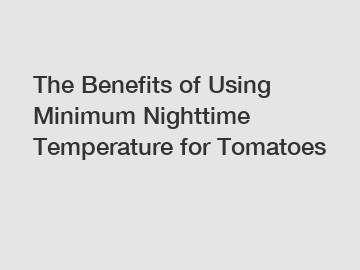What is the best structure for a greenhouse?
**Choosing the Best Structure for a Greenhouse**.
**1. Consider the Climate and Location**.
When choosing the best structure for a greenhouse, it is important to consider the climate and location where the greenhouse will be situated. Different materials and designs work better in specific climates, so make sure to choose a structure that will withstand the weather conditions in your area.

**2. Determine the Size**.
The size of the greenhouse will depend on the space available and the intended use. Consider what you will be growing and how much space you will need. Larger greenhouses provide more growing space but require more maintenance and resources.
**3. Select the Frame Material**.
Greenhouses can have frames made of wood, aluminum, or steel. Wood frames are aesthetically pleasing but require more maintenance. Aluminum frames are lightweight and durable, while steel frames are strong but can rust over time. Choose a frame material that suits your needs and budget.
**4. Choose the Covering Material**.
See also:7 Reasons Why High Quality Electronic Ear Tag Scanners Shine
Bamboo Stick Machinery
Where can I find Livestock Neck Tag for sale?
How to Succeed with Unheated Greenhouse Growing in the UK
A history of syringes
Drenching in the milking routine
Brandt VSM 300 Scalping Primary Secondary Shale Shaker ...
The covering material of a greenhouse can be glass, polycarbonate, or polyethylene. Glass provides excellent light transmission but can break easily. Polycarbonate is durable and provides good insulation, while polyethylene is an affordable option but has a shorter lifespan. Consider the pros and cons of each material before making a decision.
**5. Consider Ventilation and Cooling**.
Proper ventilation and cooling are essential for maintaining a healthy growing environment in a greenhouse. Choose a structure that allows for adequate airflow and temperature control. Louvers, fans, and vents can help regulate the temperature inside the greenhouse.
**6. Account for Accessibility**.
Ensure that the greenhouse is easily accessible for maintenance and harvesting. Consider the placement of doors and pathways to make it convenient to move around inside the structure. Accessibility is crucial for efficient operation and care of your plants.
**7. Evaluate Long-Term Costs**.
Lastly, consider the long-term costs of maintaining and operating the greenhouse. Factor in expenses such as heating, cooling, and repairs when choosing the best structure. Investing in a high-quality structure upfront may save you money in the long run.
By following these steps and carefully considering the climate, size, materials, ventilation, and long-term costs, you can choose the best structure for your greenhouse. A well-designed and properly constructed greenhouse will provide a suitable environment for growing plants and help you achieve your gardening goals.
Are you interested in learning more about container mushroom farm, fodder for sale, Common Hydroponic Fodder Production Equipment Functions? Contact us today to secure an expert consultation!
See also:Advantage Of Hydroxypropyl Starch Manufacture and ...
Revolutionizing Agriculture: Turnkey Greenhouse Equipment Worth It?
The Benefits of Using Continuous Drenchs Equipments for Sale
How to Choose Tomato Plant Frost Damage: A Comprehensive Guide
Upgrade Your Patio with Stylish Cushion Covers
High Tunnel Vs. Greenhouse: Which Is More Eco-Friendly?
The Ultimate Guide to the Best Waterproof BBQ Cover









